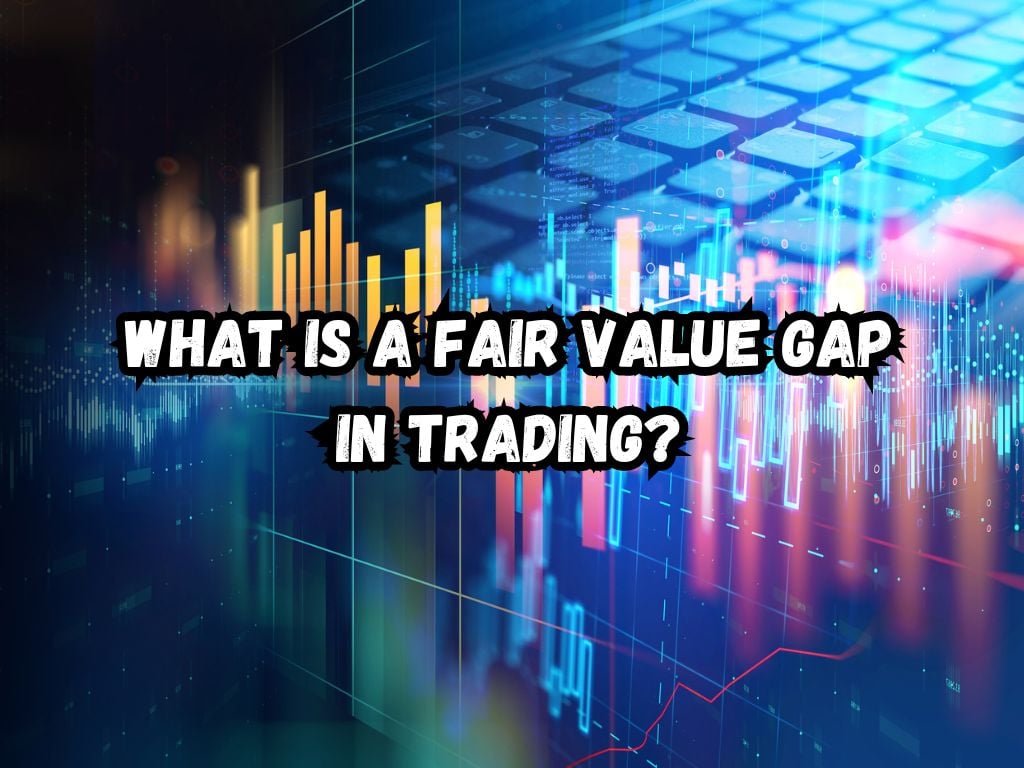In the intricate world of trading, understanding market dynamics is crucial for success. Among these concepts, the Fair Value Gap emerges as a pivotal aspect that seasoned and novice traders alike need to grasp.
This comprehensive guide aims to demystify what is a fair value gap in trading, exploring its essence, importance in trading, and offering strategic insights for leveraging this concept to optimize trading decisions.
What Is a Fair Value Gap in Trading?
When the market price of a security strays from its estimated fair value, a Fair Value Gap arises.
This gap is essentially the disparity between what the market believes the asset is worth and what fundamental analysis indicates its value should be. It signals a misalignment that savvy traders can exploit.
The Significance of Fair Value in Trading
Fair value acts as a North Star for traders, guiding them in discerning whether an asset is overvalued or undervalued by the market.
It represents a theoretical ideal price, a touchstone against which real-time market prices can be evaluated.

Importance of Fair Value Gap in Trading
Understanding and identifying Fair Value Gaps afford traders a lens through which market inefficiencies become apparent.
These gaps underscore opportunities where an asset might be ripe for buying or selling, based on its deviation from the perceived fair value.
Opportunity Identification
The recognition of Fair Value Gaps serves as a cornerstone for spotting investment opportunities.
An asset priced below its fair value may signify a potential buying opportunity, suggesting that the market has undervalued the asset relative to its intrinsic worth.
Conversely, an asset trading above its fair value might suggest an opportune moment to sell, capitalizing on the market’s overvaluation.
Manifestation of Fair Value Gap
Fair Value Gaps can materialize through various events and conditions in the market. Rapid price fluctuations following economic reports, unforeseen events, or corporate announcements often lead to temporary price gaps between market price and fair value.
Sources of Fair Value Gaps
Several triggers can lead to the creation of Fair Value Gaps. Market reactions to news events, earnings reports, or significant shifts in economic indicators can all cause immediate, but potentially temporary, divergences in an asset’s market price versus its fair value.
How to Detect a Fair Value Gap
Spotting a Fair Value Gap demands diligence and a multipronged approach, combining both fundamental analysis and technical indicators to unearth discrepancies between market prices and fair values.
Utilizing Fundamental Analysis
Fundamental analysis forms the cornerstone for calculating an asset’s fair value. Techniques such as Discounted Cash Flow (DCF) are commonly employed, offering a quantitative basis to estimate an asset’s intrinsic value by evaluating its expected future cash flows.
Leveraging Technical Analysis
While fundamental analysis computes fair value, technical analysis can help in identifying market trends and patterns that signal the presence of Fair Value Gaps.
Chart patterns, for instance, can shed light on imminent price corrections or divergences, guiding traders in making informed decisions.

Trading Strategies Around Fair Value Gap
Leveraging information on Fair Value Gaps allows traders to strategize, aiming to exploit these gaps for potential profits.
A nuanced understanding can guide the timing of trades—when to enter and when to exit.
Gap Trading Strategy
One prevalent strategy is gap trading, wherein traders position themselves in anticipation that the market will move to fill the gap—aligning the market price with the fair value.
This approach necessitates astute market observations and a rigorous analysis to accurately predict potential movements.
Risks and Considerations
Trading based on Fair Value Gaps is not without its challenges and risks. Market dynamics are unpredictable, and gaps may not always close as expected.
Thus, a deep understanding and careful consideration are paramount to navigate these waters safely.
Market Volatility and Unpredictability
The inherent volatility and unpredictability of markets mean that relying exclusively on Fair Value Gaps can be risky.
Gaps might persist longer than anticipated, or external factors could alter the expected course, impacting the profitability of trading strategies based on these gaps.
Frequently Asked Questions
What is a Fair Value Gap in trading?
A Fair Value Gap in trading denotes the discrepancy between the market price of an asset and its computed fair value, spotlighting potential overvaluation or undervaluation by the market.
How is a Fair Value Gap identified?
Identification of a Fair Value Gap combines intrinsic valuation methodologies and technical analysis to contrast a security’s current market price with its estimated fair value, uncovering potential discrepancies.
How can traders use the Fair Value Gap concept to their advantage?
Traders can leverage the Fair Value Gap concept by identifying assets undervalued or overvalued by the market, using these insights to make strategic buying or selling decisions based on anticipated market corrections.
What are the risks associated?
The risks include the market not adjusting as anticipated, leaving gaps unfilled, or external influences distorting the expected alignment, potentially leading to unforeseen losses.
Mastering the intricacies of the Fair Value Gap can significantly refine a trader’s strategy, providing a robust framework for navigating the complexities of the financial markets adeptly.
Conclusion
Incorporating an understanding of the Fair Value Gap into trading strategies offers traders a critical edge in the competitive trading landscapes.
By aligning trading actions with insights gleaned from these gaps, traders can make more informed decisions, potentially capitalizing on market inefficiencies for gains.
However, success demands vigilance, rigorous analysis, and an appreciation of the risks involved.


 Tags:
Tags:










